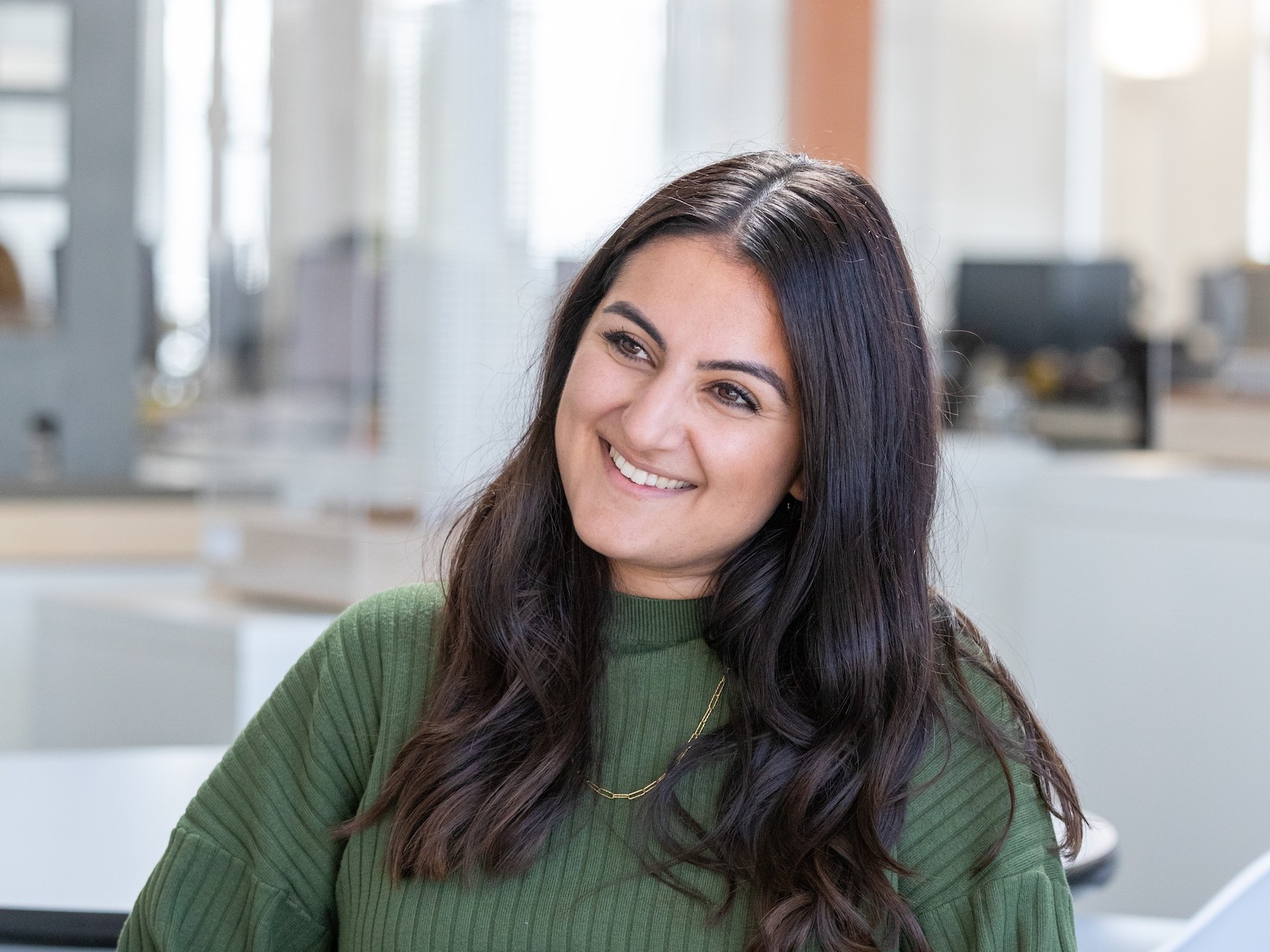Francesca Ghavami-Milnes reflects on her role as Chair of BCO’s NextGen Midlands Committee, working at Howells and blurring the boundaries between work, rest and play.
What’s your involvement with the BCO?
I’m the Chair of the NextGen committee for the Midlands. We gather together every four to six weeks and come up with ideas for the NextGen members in terms of engagement, events, tours, things happening in Birmingham and in the Midlands that members might want to visit. We have panels discussions and round tables and, with the wider NextGen members, we’ve launched a fantastic ideas competition. It’s to do with office design – what would your ideal office of the future look like? – so it’s linked into this whole idea of having a NextGen arm. NextGen now makes up a third of BCO members. Of the 1,000 or so conference delegates 200 are NextGen, so it’s really growing. The idea of the competition is a way of acknowledging that the future of the office is those people coming out of university. They’ll be the people using them, so they’re the people you should be designing for and learning from.
I’ve always been kind of curious about the BCO, and I just thought if you want to change things you have to get involved. If you want to have a voice and have a platform the BCO’s the perfect place. It’s been one of the best things I’ve done. I’ve got to see so many offices, whether new build or retrofit, and I really enjoy the networking, and the different connections you make. There’s a lot of mentoring involved. There’s a main committee as a Chair I get to attend those meetings and they have a lot of knowledge. NextGen has a lot of people at the start of their career and we mentor them. I really enjoy it. The Chair role is very recent; it’s an added bit of commitment and I suppose a bit of personal growth.
How did you become interested in workplace design?
Before joining Howells I worked as a workplace consultant at Squaredot in Stratford-upon-Avon, and that was really where I grappled with the idea that you can’t adopt a one-size-fits-all approach to property. I used to go and spend a lot of time with different companies, getting a real understanding of the way they worked and how they used their space day to day. Even pre-Covid the office landscape had changed massively. There was a realisation that call centres needed a completely different environment from, say, a legal firm or the creative industries. Covid really accelerated the fact that you can’t just say “here’s a nice space, let’s fill it with tables and chairs”, you have to focus on spatial quality in relation to how the space is being used.
Arup’s Birmingham office is a good example of the flight to quality over quantity. If you live outside Birmingham and work in the city centre you’re not necessarily going to go into the office every day, so there’s no need for a desk space for everyone, but if you can offer a high quality environment you can tempt people to spend more time at work. So it’s less about massive floorplates, and more about actually investing in the quality of the space, the materials you use. Young people in particular are simply not accepting any old unsustainable building. Covid definitely accelerated that.
Tell us about your role at Howells
When I left Squaredot I went to live in Australia for a year. I was determined to get a job in interior design, but actually I worked in a coffee shop in Melbourne, which was great. When I got back I thought “I’ve lived in a big city, I want to work in Birmingham” and got the job at Howells. It’s very social, which I love. I work on a mix of workspace – I worked on Two Chamberlain Square and One Centenary Way at Paradise – but I also work on resi projects like the Octagon.
I see workspace and resi as completely blurred. Residential amenity spaces and workplace settings are part of the same continuum. You could take a floor plate for the entrance level of a residential development and assume it was a workspace. Spatially, as an interior designer you can really merge the two. We’re offering co-working spaces and social spaces. Young people in particular want that variety, they don’t just want a desk by a window. That’s why Next Gen is really working to push development even more. Those best practice guidelines are continually evolving. I find it really interesting that we’re building eco systems that blur the line between work, live and play.
Source: Architecture Today

